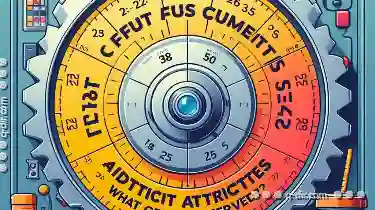While this can be perfectly fine in most operating systems, it seems like a challenge when dealing with Microsoft Windows. Windows has limitations on file ...
 path lengths, which can cause issues when trying to delete these large paths. This blog post will explore the specifics of handling such cases and provide practical solutions for managing files with long names or paths in Windows. In today’s digital age, we often encounter files and folders that have long names or paths.
path lengths, which can cause issues when trying to delete these large paths. This blog post will explore the specifics of handling such cases and provide practical solutions for managing files with long names or paths in Windows. In today’s digital age, we often encounter files and folders that have long names or paths.1. Understanding the Limitation
2. Impact of Long Paths
3. Steps to Delete Long Path Files
4. Best Practices and Tips
5. Conclusion
1.) Understanding the Limitation
Windows operating systems have a maximum path length limitation that affects how long filenames and folder names can be. While recent versions like Windows 10 allow longer paths, there are still limitations imposed by older versions and some applications might not support extended paths fully. The typical limit is around 260 characters for full paths including the drive letter, but this can vary based on specific configurations and file system types.
2.) Impact of Long Paths
When dealing with files or folders that have names longer than the standard Windows path length limitation, several issues can arise:
- File Management Software Issues: Some software might not handle long paths correctly, leading to errors or crashes.
- System Limitations: The operating system itself may restrict certain operations if the path exceeds a certain length.
- Compatibility Problems: Certain applications and services might not support extended paths, causing them to malfunction or fail when encountering long filenames.
3.) Steps to Delete Long Path Files
If you need to delete files with long paths in Windows, consider these steps:
1. Upgrade Your System: Ensure your Windows is updated to the latest version if possible. Microsoft has introduced features and updates that might support longer paths more effectively.
2. Use Command Line Tools: Utilize command line tools like PowerShell or CMD commands for file management. These tools can often handle long paths without issues because they are less dependent on graphical user interface (GUI) elements.
- Open Command Prompt as Administrator.
- Use the `rmdir` or `del` command followed by the full path to the file you want to delete.
3. Third-Party Tools: There are third-party tools designed to handle long paths and complex directory structures more effectively, which might be available in the market or online for free use. These could include special filesystem operations that Windows native functions do not support.
4. Check File System Type: Ensure your file system (like NTFS) supports extended path lengths. Some older systems may have limitations on path lengths even if the filenames themselves are short.
4.) Best Practices and Tips
- Always ensure you have backups of important files before making any changes, including deletions. This will help in case any operation goes wrong.
- Be aware of the specific version of Windows or software you are using as some might not support extended paths fully.
- Regularly update your systems and applications to benefit from the latest updates that could resolve path length issues.
5.) Conclusion
Handling long file paths can be a challenge due to Windows’ limitations, but with updated tools, command line access, and possibly third-party software solutions, you should be able to manage these situations effectively. Understanding these limitations not only helps in better managing your digital assets but also guides expectations when collaborating with others using different operating systems or older versions of Windows.
By following the outlined steps and tips, you can navigate through the complexities associated with long paths on Windows without much hassle. Remember that some software might still have compatibility issues, so always double-check before finalizing a deletion to avoid any accidental loss of data.

The Autor: / 0 2025-02-21
Read also!
Page-

When Renaming is Not Enough: The Case for Metadata Enrichment.
However, there are scenarios where simply changing a name doesn't cut it. This is where metadata enrichment comes into play - enhancing the data ...read more

Undisputed Ease: Icon File Browse
Whether you are a professional designer, an avid photographer, or simply someone looking to streamline their digital asset organization, choosing the ...read more

Cutting Files with Custom Attributes: What Gets Preserved?
When it comes to cutting files and folders, especially in a digital environment like computers or cloud storage platforms, certain aspects of the ...read more